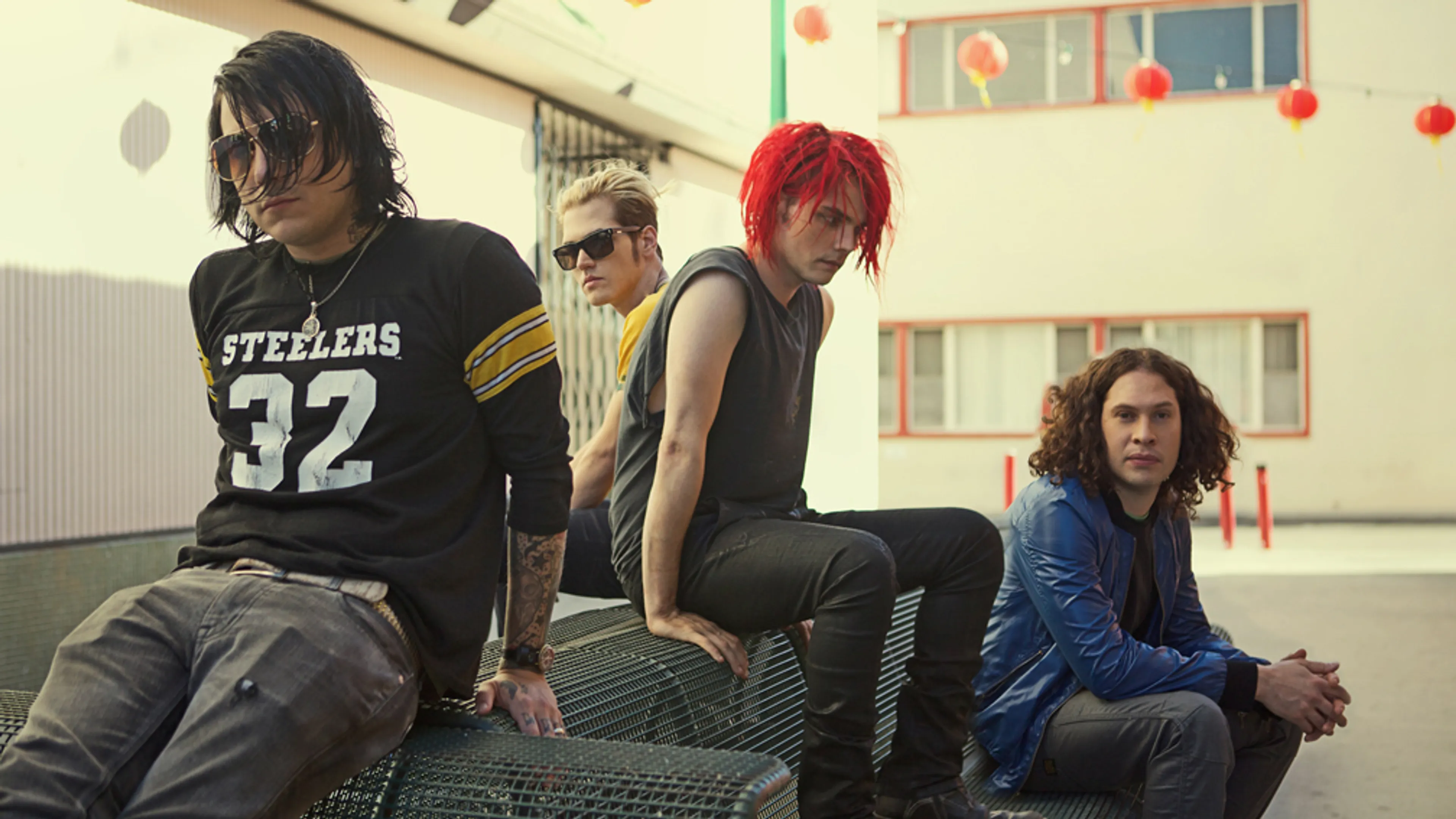In 2006, My Chemical Romance were filling arenas and flooding the airwaves with their monochrome, classic rock-inspired magnum opus, The Black Parade – an exploration of mortality that mixed theatrical bombast while delving into the abyss. It seemed a natural evolution from the band’s previous two albums – I Brought You My Bullets, You Brought Me Your Love and Three Cheers For Sweet Revenge – a two-part saga filled with grief, loss and punk rock. Fans were more than ready to darken their clothes, strike a violent pose and don the military-style jackets of this new era, but for what came next, they would need a whole new wardrobe, colour scheme and mindset. After scrapping their first attempt at a follow-up record entirely – “We needed a new mission,” frontman Gerard Way told NME at the time – My Chem took a creative hard left, and subsequently returned with a Technicolor, futuristic, synth-laden masterpiece.
Danger Days: The True Lives Of The Fabulous Killjoys is a bold, bright, explosion of colour and sound. It’s a different, hopeful and altogether more fun side to My Chemical Romance, unlike anything we'd heard from them before. After spending years inhabiting marching band alter-egos, their new visuals were even more complex, detailed and fully-realised. This updated aesthetic helped to construct Danger Days’ futuristic, out-of-this-world landscape, with the album written as a pirate radio transmission from post-apocalyptic California in 2019, reimagining Gerard, Mikey Way, Frank Iero and Ray Toro as the Killjoys, a gang of outlaws living outside of the utopian Battery City, run by a corporation called Better Living Industries.
